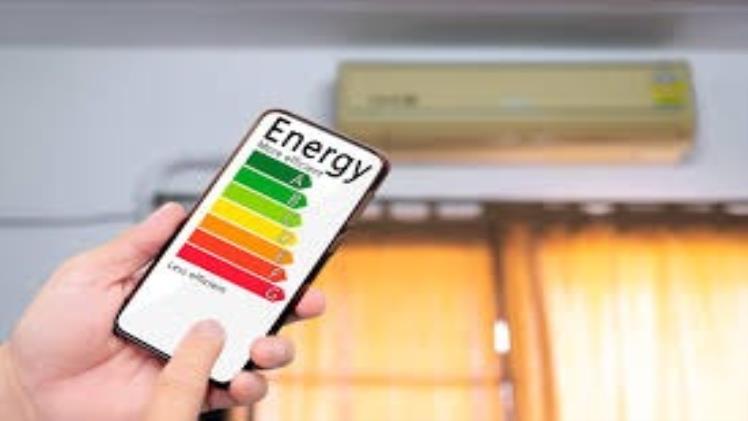How to Cut Soaring Electricity Bills: Smart Energy Strategies Without Sacrificing Comfort

Electricity bills have become a serious concern for households across the UK. Between 2021 and 2024, average residential energy costs nearly doubled, straining budgets and leaving many families anxious about future hikes. These rising costs aren’t just statistics — they translate into tough choices: fewer treats, delayed plans, or stretching monthly finances to the edge.
Faced with this, many people resort to cutting back on the basics: switching off lights, limiting heating, shortening showers. But living with constant compromises isn’t the only option. Today, there are practical strategies that go beyond simply “using less” to fundamentally change how homes consume and pay for electricity.
This article explores a range of intelligent, straightforward approaches any homeowner can adopt — from small upgrades to more transformative solutions — all designed to bring down bills without sacrificing comfort.
1. Upgrade to Energy-Efficient Appliances
A sensible starting point is replacing old, power-hungry appliances. Refrigerators, dishwashers, washing machines, and tumble dryers that are 10 or 15 years old often consume up to twice as much energy as modern models.
Look for appliances rated with top-tier energy efficiency labels. While the upfront investment is higher, the reduction in electricity consumption can be substantial. Over several years, these savings often offset the initial cost — and then continue paying dividends.
2. Install Smart Thermostats and Controls
Heating and cooling account for a significant share of household electricity use. Smart thermostats and zoning controls make managing this far more precise. They learn daily routines and automatically adjust temperatures to avoid heating empty rooms or running overnight when not needed.
Some systems even detect when windows are open and temporarily switch off heating to avoid waste. These controls reduce unnecessary energy use while maintaining a comfortable living environment — no more constant fiddling with the thermostat.
3. Use Photovoltaic Energy for Targeted Loads
Many people think solar panels are only worthwhile with large roof installations designed to power an entire home. But small-scale photovoltaic (PV) setups can be strategically deployed for specific heavy loads.
For example, water heating is one of the biggest energy expenses in most households. By connecting a dedicated PV system to the electric water heater, homeowners can use sunlight to heat water during the day, dramatically reducing the power drawn from the grid.
Other examples include solar systems linked directly to underfloor heating or swimming pool pumps. These setups don’t necessarily eliminate bills but carve out significant recurring costs — without any daily effort required.
4. Shift Demand to Cheaper Times
Another tactic is to adjust when energy-intensive appliances operate. Many electricity suppliers offer off-peak tariffs, where rates drop substantially late at night or in the early morning hours.
Using timers on dishwashers, washing machines, or even immersion heaters allows these devices to run during these lower-cost periods. Electric vehicle owners often set charging to off-peak windows, taking advantage of these rate differences.
This approach can deliver noticeable savings over time. The limitation, of course, is that it doesn’t change overall consumption — and you’re still subject to market rate changes and seasonal price surges.
5. Insulate to Retain Heat and Cool Air
While not strictly an electrical solution, improving insulation remains one of the most effective ways to control energy costs. Double or triple-glazed windows, loft insulation, and sealing draughts mean less reliance on electric heaters or fans. The less your home leaks warm or cool air, the less energy you need to stay comfortable.
6. Home Battery Storage: A Strategic Shift in Managing Energy Costs
For homeowners looking for a more robust, future-focused way to manage soaring electricity bills, home battery storage stands out as a sophisticated solution.
Unlike appliances or timers that only reduce consumption slightly or change the time you draw power, a home battery fundamentally changes how and *when* you pay for electricity.
HOW IT WORKS
* During the day, rooftop solar panels (if installed) can charge the battery.
* The stored energy is then used in the evening or during peak tariff hours, when buying power from the grid would be most expensive.
* Even without solar, some systems are designed to draw electricity from the grid during off-peak hours when it’s cheapest, storing it for use later when prices spike.
This approach doesn’t just lower bills by reducing energy use — it reduces the cost per unit you pay. In essence, the household becomes less exposed to the high rates typically charged during peak demand.
ON-GRID VS OFF-GRID OPTIONS
Most homes use on-grid battery systems. These keep you connected to the utility supply but rely on the battery first, tapping into the grid only when necessary. This guarantees reliable power while dramatically cutting costs.
Off-grid systems are suitable for remote properties or those seeking total energy independence. They require careful planning and a larger battery setup but can eliminate grid reliance completely.
ADDED RESILIENCE
Home batteries also serve as a backup during power cuts. In many systems, the battery automatically takes over to keep essential circuits — like lighting, refrigeration, or internet routers — operational.
With the frequency of extreme weather events rising and pressure on aging grid infrastructure growing, this resilience is becoming an increasingly valuable benefit.
INTELLIGENT MANAGEMENT
Modern home battery systems use smart software that continuously monitors energy prices, weather forecasts, and household demand. They can decide the most cost-effective moments to charge or discharge, requiring no manual input. This means savings happen quietly in the background, without the homeowner having to track tariffs or adjust settings daily.
WHY THIS MATTERS MORE THAN EVER
The reality is that electricity prices have become volatile, influenced by global supply issues, climate events, and political factors far beyond any single household’s control.
While efficient appliances, smart controls, and thoughtful timing all help reduce costs, these methods still leave families fully exposed to market rate shifts. Home battery storage offers a more strategic defense — not by simply reducing how much electricity you use, but by giving you control over *when you pay for it*, and often at a far lower rate.
A BALANCED APPROACH
The most practical energy strategy combines multiple elements:
* Efficient appliances to reduce baseline consumption
* Smart controls to avoid unnecessary use
* Targeted solar installations to offset major loads
* Off-peak shifting to exploit lower rates
* And, for households wanting the strongest protection, home battery storage to take command of electricity costs over the long term.
This layered approach cuts costs without forcing sacrifices in comfort — allowing families to continue living well, even as energy prices fluctuate.
7. Summary
Rising electricity prices are squeezing household budgets across the UK. While simple changes like upgrading appliances or adjusting usage times help, true stability comes from more advanced tools like home battery storage. By controlling when and how you pay for power, you insulate your home from unpredictable costs, keeping comfort high and bills under control.




